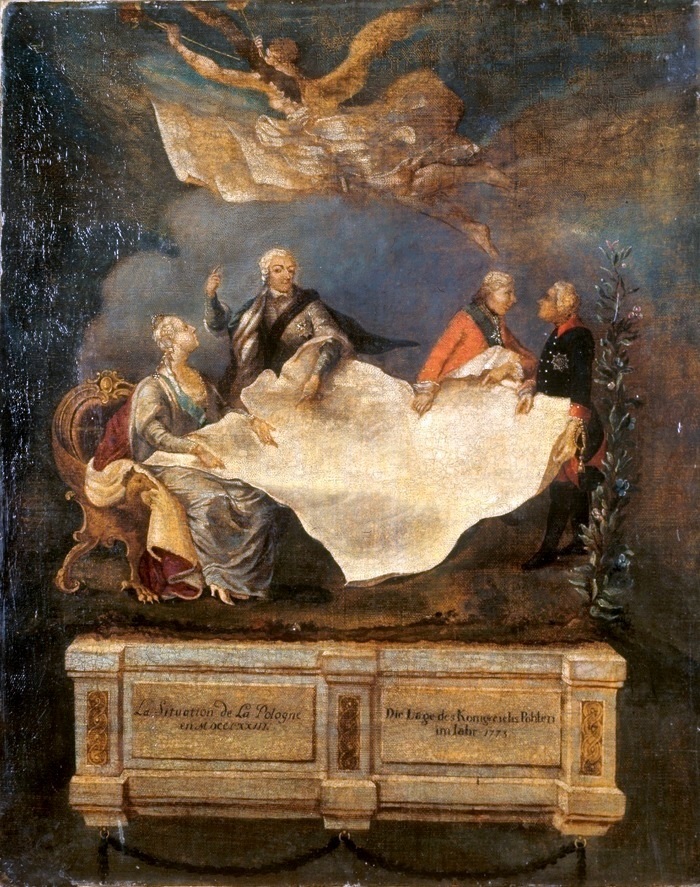The Troelfth Cake on:
[Wikipedia]
[Google]
[Amazon]

 ''The Troelfth Cake'' (also ''The Twelfth Cake'', ''The Royal Cake'', ''The Cake of Kings'', from the french: Le gâteau des rois, pl, Kołacz królewski, ''Placek królewski'') is a 1773 French allegory and
''The Troelfth Cake'' (also ''The Twelfth Cake'', ''The Royal Cake'', ''The Cake of Kings'', from the french: Le gâteau des rois, pl, Kołacz królewski, ''Placek królewski'') is a 1773 French allegory and

 ''The Troelfth Cake'' (also ''The Twelfth Cake'', ''The Royal Cake'', ''The Cake of Kings'', from the french: Le gâteau des rois, pl, Kołacz królewski, ''Placek królewski'') is a 1773 French allegory and
''The Troelfth Cake'' (also ''The Twelfth Cake'', ''The Royal Cake'', ''The Cake of Kings'', from the french: Le gâteau des rois, pl, Kołacz królewski, ''Placek królewski'') is a 1773 French allegory and satire
Satire is a genre of the visual, literary, and performing arts, usually in the form of fiction and less frequently non-fiction, in which vices, follies, abuses, and shortcomings are held up to ridicule, often with the intent of shaming ...
on the First Partition of Poland. It is likely that the original title in English was intended to say "The Twelfth Cake", alluding to the division of a three kings cake
A king cake, also known as a three kings cake, is a cake associated in many countries with Epiphany. Its form and ingredients are variable, but in most cases a () such as a figurine, often said to represent the Christ Child, is hidden insid ...
(also called a Twelfth Cake), but this became corrupted in later reprints. There are at least four variants of the composition, which is most common as an engraving
Engraving is the practice of incising a design onto a hard, usually flat surface by cutting grooves into it with a burin. The result may be a decorated object in itself, as when silver, gold, steel, or glass are engraved, or may provide an in ...
, but also as at least one color painting
Painting is the practice of applying paint, pigment, color or other medium to a solid surface (called the "matrix" or "support"). The medium is commonly applied to the base with a brush, but other implements, such as knives, sponges, and ai ...
; the original was likely drawn by Jean-Michel Moreau le Jeune and engraved by Nicolas Noël Le Mire (although another source calls them merely the authors of the most famous variant). Authors of other variants included the German artist Johannes Esaias Nilson.
''The Troelfth Cake'' shows the rulers of the three countries that participated in the partition tearing a map of the Polish–Lithuanian Commonwealth
The Polish–Lithuanian Commonwealth, formally known as the Kingdom of Poland and the Grand Duchy of Lithuania, and, after 1791, as the Commonwealth of Poland, was a bi- confederal state, sometimes called a federation, of Poland and Lithuania ru ...
apart. The outer figures demanding their share are Catherine II of Russia and Frederick II of Prussia. Catherine is glaring at her former lover, the Polish king Stanisław August Poniatowski, and (in some variants of the engraving) Frederick is pointing to Danzig (Gdańsk) with a sword (although Prussia acquired the territories around it, Gdańsk still remained with the Commonwealth). The inner figure on the right is the Habsburg Emperor Joseph II
Joseph II (German: Josef Benedikt Anton Michael Adam; English: ''Joseph Benedict Anthony Michael Adam''; 13 March 1741 – 20 February 1790) was Holy Roman Emperor from August 1765 and sole ruler of the Habsburg lands from November 29, 1780 un ...
. On his left is the beleaguered Stanisław August Poniatowski, who (in some variants of the engraving) is experiencing difficulty keeping his crown on his head, and in another, has already lost it. Above the scene is Pheme
In Greek mythology, Pheme ( ; Greek: , ''Phēmē''; Roman equivalent: Fama), also known as Ossa in Homeric sources, was the personification of fame and renown, her favour being notability, her wrath being scandalous rumours. She was a daughte ...
(personification of fame, with manifestos from the partitioning powers in the German variant).
The composition gained notoriety in contemporary Europe; its distribution was banned in several European countries, including France. This ban, and associated penalties, meant that many variants of this work have been anonymous.
The image was highly influential on numerous other satirical works of its time.
The changes between the French original and the German version, both portrayed here, were done to reduce the sexual content of the satire (the look between the lovers, the phallic
A phallus is a penis (especially when Erection, erect), an object that resembles a penis, or a mimesis, mimetic image of an erect penis. In art history a figure with an erect penis is described as ithyphallic.
Any object that symbolically— ...
sword).
References
{{DEFAULTSORT:Troelfth Cake 1773 drawings 18th-century engravings Partitions of Poland French art